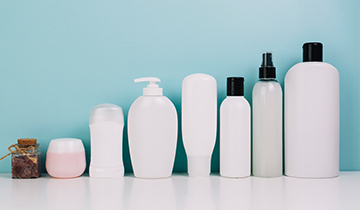Anionic surfactants constitute a class of organic compounds characterized by a hydrophilic head or polar group on one end and a hydrophobic tail or nonpolar group on the other end. This polar-nonpolar structure allows them to efficiently reduce surface tension and act as detergents when dissolved in water. The hydrophilic head group of it includes carboxylates, sulfates and sulfonates.
Carboxylate Surfactants: Soap Making Through Saponification
One of the earliest and most ubiquitous anionic surfactants is carboxylate, commonly known as soap. Soap is produced through the reaction of fats or oils with an alkaline hydroxide solution, known as saponification. Saponification converts the triglycerides in oils and fats into salts of fatty acids, generally sodium or potassium salts. These salts of fatty acids possess a polar carboxylate head and a nonpolar hydrocarbon tail structure. Traditional soap-making relied on animal fats and vegetable oils. Today, refined plant oils and fats are commonly used for commercial soap production.
Sulfate and Sulfonate Surfactants: Petroleum-Derived Detergents
With the rise of the petrochemical industry in the early 20th century, surfactants could be derived from petroleum rather than natural fats and oils. Two major classes of Anionic Surfactants developed: alkyl sulfates and alkyl aromatic sulfonates. In alkyl sulfates, the hydrophilic group is a sulfate ester and the hydrophobic part is a long alkyl chain. Linear alkylbenzene sulfonate (LAS) is a commonly used alkyl aromatic surfactant where the hydrophilic group is attached to an aromatic carbon. Sulfate and sulfonate detergents had performance advantages over soap and dominated the market in subsequent decades.
Applications in Household and Industrial Cleaning
The detergency and cleaning ability of anionic surfactants arise from their ability to reduce surface tension at interfaces and disperse oily soils in water. This allows them to lift, suspend and remove dirt, grease and other contaminants during washing and rinsing. As a result, anionic surfactants find widespread use across household and industrial cleaning applications. Common household products include laundry detergents, dish washing liquids, shampoos, body washes and more. They are also extensively used for industrial purposes like degreasing, emulsion polymerization and waste treatment.
Factors Affecting Performance and Formulation
The cleaning effectiveness of an anionic surfactant depends on factors like its molecular structure, concentration used and water properties. Surfactants with longer alkyl chains have better oil solubilization ability, while those with multiple charges per molecule display higher detergency. Water hardness affects performance; hard water requires more surfactant. Blends of different anionics or additions of non-ionics are often used for optimum cleaning over a wide range of conditions. Other formulation components like builders, enzymes, and bleaches aid cleaning by sequestering ions, breaking down soils or providing bleaching action. Careful balancing is required to design cleaning products with high performance, low irritation and environmental compatibility.
Environmental and Toxicological Profile
When used as directed and fully biodegraded, anionic surfactants pose minimal risk to the environment and human health. Linear alkylbenzene sulfonates are among the most readily biodegradable. Fatty alcohol sulfates and ethoxylated sulfates also display good ultimate biodegradability. However, their degradation intermediates may exhibit some toxicity and surfactants discharged in concentrated forms can impact aquatic life. Regulations on anionic surfactant content in sewage and receiving waters aim to balance effective cleaning and environmental protection. From a human toxicity perspective, risks are generally low for occupational exposures and recommended product use levels. However, some anionics are not recommended for use on sensitive individuals with conditions like atopic dermatitis.
Advancing Formulation Through Structure Modification
Ongoing research aims to develop less irritating, more efficient and renewable anionic surfactant formulations. Areas of focus include synthesizing structured surfactants with specific branching patterns, unusual hydrophobic groups and multiple head groups for optimized performance. Naturally-derived feedstocks from plant oils provide an environmentally-friendly alternative to petrochemical routes. Biodegradable gemini surfactants containing two hydrophilic groups have shown potential for low-dosage formulations. Selection of appropriate counterions also influences properties; citrate and amino acid salts offer benefits over conventional sodium and potassium types. Through such modification efforts, they continue to respond to changing market needs across diverse industries well into the future.
Their wide usage spectrum stems from their ability to alter interfacial properties and act as efficient cleaners. Constant formulation innovation helps optimize their performance-environmental impact balance. Understanding key structure-property relationships provides insights for customized structural designs addressing specific application challenges. Overall, anionic surfactants remain the established workhorses for cleaning and continue to evolve to meet sustainability demands through renewable feedstocks and advanced molecule engineering.
*Note:
1. Source: Coherent Market Insights, Public sources, Desk research
2. We have leveraged AI tools to mine information and compile it




